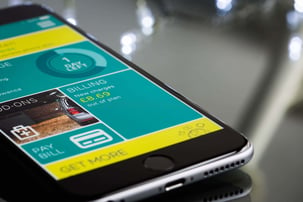Ideal iOS App Development Team: Roles, Skills, and Dynamics

This article cuts to the chase, offering you a roadmap for piecing together an iOS app development team equipped with the right mix of roles, skills, and collaboration tactics. By the time you finish reading, you’ll know exactly who you need on board and how they should work together to achieve your goals.
Key Takeaways
- A well-functioning iOS app development team consists of five key roles: the Product Owner, iOS Developer, UI/UX Designer, Backend Developer, and QA Engineer, each bringing specialized skills to the project.
- Forming a balanced iOS app development team depends on several factors including project complexity, timeline, and budget, which affect team size, composition, and costs; options include in-house, freelancers, outsourcing, and dedicated teams.
- Effective collaboration and communication, facilitated by methodologies like Agile, and tools such as Slack and Jira, are essential for navigating the iOS app development process, which includes stages of ideation, design, development, testing, and deployment.
Key Roles in an iOS App Development Team
A successful mobile app development team is akin to a well-oiled machine, where each component contributes to the smooth operation and final product. Five key roles collaborate in iOS app development to shape the app’s creation and refinement:
- Product Owner
- iOS Developers
- UI/UX Designers
- Backend Developers
- QA Engineers
Each of these roles is vital in its way, bringing unique skills and expertise to the table, shaping the app’s vision, building its structure, crafting its user experience, ensuring its functional integrity, and assuring its quality.
Product Owner
At the helm of the app development team is the Product Owner, a specialist who sets the course for the entire development journey. Their role involves:
- Gathering and prioritizing user requirements,
- Maintaining a product backlog,
- Defining project goals,
- And managing the budget.
But the buck doesn’t stop there. Product Owner also ensures that the app’s financial sustainability aligns with its purpose and user preferences, making a monetization strategy a critical part of their role. This holistic approach ensures that clear objectives for the app guide the development process and establishes benchmarks for measuring success.
In the broader context of a mobile app development project, Product Owner serves as a bridge, connecting the app’s ideation to its realization. They navigate the complexities of the project, balancing user needs, business objectives, and financial considerations. They are akin to a captain steering the ship through turbulent waters, ensuring that the app’s journey aligns with the company’s vision while staying afloat in the competitive marketplace.
iOS Developers
The following are the roles and responsibilities of iOS developers:
- They play a crucial role in breathing life into the app.
- They are armed with proficiency in programming languages like Swift or Objective-C, and experience with tools like Xcode.
- They are the builders of the app.
- Their role extends beyond just coding.
- They optimize the app’s performance.
- They ensure compatibility with different iOS devices.
- They adhere strictly to Apple’s design and functionality guidelines.
iOS developers form the core of the app development process, employing third-party libraries and the latest technologies, frameworks, and components for creating modern and high-performing solutions. They translate the app idea into a functional product, creating an app that not only works seamlessly but also offers a delightful user experience.
UI/UX Designers
UI/UX designers function as the creatives within the mobile app development team. They focus on creating interfaces that are intuitive, visually appealing, and user-friendly, while also adhering to Apple’s stringent design guidelines. Their role is pivotal in shaping the user experience, crafting an interactive realm where users can engage with the app effortlessly.
Beyond aesthetics, UI/UX designers ensure that the app’s design aligns with the user’s expectations. They provide a UI that is:
- Clear,
- Accessible,
- Engaging,
- And consistent with the expected user experience.
A well-crafted user interface significantly contributes to an app’s identity, enhancing usability and ensuring a seamless user journey.
Backend Developers
Backend developers work behind the scenes to ensure the app’s smooth operation. They are responsible for:
- Creating the app infrastructure,
- Establishing databases,
- Crafting the server-side components essential for running the app smoothly,
- Designing and implementing database architecture,
- Managing secure data communication,
- Developing the app’s operational logic.
They play a crucial role in ensuring the app’s seamless functionality. A critical part of a backend developer’s role is to:
- Prioritize the optimization of app performance,
- Minimize response times,
- Ensure the infrastructure is scalable and reliable,
- Handle intricate application logic for complex server-side projects,
- Architect a solution that effectively meets the project’s needs.
QA Engineers
QA Engineers hold a critical position in ensuring a final mobile app that is free of bugs and meets quality standards. Their efforts are vital to the overall success of the app development process. They work closely with developers, designers, and other team members to provide feedback on identified issues and ensure the app’s quality. They conduct a spectrum of testing activities, including:
- Functional testing,
- Usability testing,
- Performance testing,
- Security testing.
These activities are crucial for checking the app’s readiness for deployment.
However, their role extends beyond the launch of the app. In the maintenance and support phase, QA Engineers ensure the continuous operation and improvement of the app, including updates and security measures in compliance with iOS App Store regulations. Their meticulous work not only enhances user satisfaction but also boosts the app’s overall dependability.
Building a Balanced iOS App Development Team
Forming a balanced iOS app development team necessitates a thoughtful consideration of diverse factors. It is not just about assembling a team of skilled professionals but also about finding the right balance that aligns with the project’s complexity, timeline, and budget.
The first step in assembling a mobile app development team is identifying the specific experts and determining how many are required. This is vital to ensure that the team has the necessary skills and resources for a successful project. This delicate balance ensures that the team is well-equipped to handle the project’s challenges and successfully bring the app to life.
Project Complexity
Project complexity has a direct impact on the team’s size and makeup. The more complex the mobile solution is, the greater the time needed to develop it fully, which impacts both the timeline and the associated costs. Complexity in mobile apps is characterized by:
- The number of features,
- Functionalities,
- Components,
- The intricacy of interactions within the app’s codebase.
The number of intended features and the complexity of these features are the main determinants of the development timeline and can require different team sizes and compositions. The type of app, whether it’s simple, medium complexity, or complex, significantly influences the development timeline, which in turn affects the size and resource allocation of the development team.
Timeline
Another critical element that affects the team’s size and resource distribution is the project’s timeline. Larger and more experienced teams can expedite complex app projects by dividing tasks effectively and applying advanced project management techniques. This approach allows for a more streamlined development process, ensuring that the project stays on track and meets its deadlines.
However, unexpected delays or last-minute changes are not uncommon in the app development process. Allocating buffer time within the project timeline is crucial to managing these effectively. This buffer time provides the team with some leeway to handle unexpected challenges without derailing the project’s timeline.
Budget
The mobile app development budget is a key determinant in the formation of an app development team. It determines resource allocation, directly impacting the number of professionals that can be hired for the iOS app development team. An iOS app’s development budget is influenced by factors such as the complexity of the app, the features required, and the choice of development team, including their geographic location.
While forming an in-house team may provide comprehensive control over the project, it often comes with high overhead costs. On the other hand, outsourcing iOS app development can offer a more immediate and cost-effective solution. It often provides a high level of expertise without the overheads of recruitment and team building.
Approaches to Forming an iOS App Development Team
There are numerous approaches to forming an iOS app development team, each presenting its pros and cons. These include:
- Forming an in-house team,
- Hiring freelancers,
- Opting for a dedicated team,
- Outstaffing,
- Outsourcing.
Business leaders looking to develop mobile app solutions must first decide on the type of partnership and team formation strategy that will be most effective for their project.
In-House Team
An in-house iOS app development team fosters comprehensive control over the app development lifecycle, enabling immediate decision-making and the flexibility to make adjustments in real-time. The app is more likely to reflect the company’s core values and mission when developed by a mobile application development team that is deeply assimilated within the company’s culture, as opposed to outsourcing to a mobile app development company.
However, forming an in-house team comes with its challenges. High overhead costs, including salaries, benefits, and infrastructure, present a financial challenge when forming an in-house team. Recruiting the right talent can be resource-intensive and may encounter skill gaps, severely influenced by the current job market conditions.
Freelancers
Hiring freelancers provides flexibility and scalability, making it a preferred choice for many companies. Freelancers are projected to become the majority workforce in the USA by 2027, indicating a significant shift in employment trends. More than 50% of companies have hired freelancers in 2023, reflecting the growing reliance on this workforce sector.
However, the same trend of increasing freelance engagement also introduces risks such as variable quality of work and less predictable reliability compared to in-house teams. While freelancers offer the benefits of flexibility and scalability, they may not offer the same level of commitment and reliability as a dedicated in-house team.
Outsourcing
Outsourcing app development involves hiring a third-party company to create the app and offering access to a team with a portfolio of successful projects and expert knowledge. The cost of developing a mobile app through outsourcing can be greatly affected by variables like:
- Product complexity,
- Host operating system,
- Application type,
- Development team,
- Location.
While outsourcing provides access to a wealth of experience and skills, it also brings challenges such as:
- Limited face-to-face contact,
- Time zone differences,
- Potential language barriers.
- Fewer updates, which may lead to misunderstandings in communication.
Dedicated Team
Dedicated teams provide business-specific tailored solutions and are equipped to adapt easily to changing project dynamics and priorities, offering greater control over the development process. A partnership with a third-party service provider like Netguru has enabled companies to swiftly deploy innovative technology, helping them gain a competitive edge in the market and scaling up their software engineering capacity.
In essence, a dedicated team:
- Acts as an extension of your in-house resources,
- Works in tandem with your team to achieve the project objectives,
- Is committed to your project,
- Brings specialized knowledge and skills tailored specifically to your industry.
Collaboration and Communication in an iOS App Development Team
Effective collaboration and communication among software development team members are heavily relied upon for the success of an iOS app development project. This ensures that the app development process aligns with the company’s plans, designs, and visions, helping to mitigate delays, errors, and project failures.
Effective communication streamlines complex processes, integrates tools, and increases productivity, all of which are outcomes of effective communication in app development teams.
Agile Methodology
To leverage its iterative approach that enables adaptability and enhances collaboration among team members, Agile methodology is frequently employed in iOS app development. Agile methodologies contribute to the development process by allowing for greater flexibility, enabling rapid iterations that incorporate feedback and improve risk management.
For managing complex projects, Scrum, which is part of the Agile framework, is frequently utilized to organize the app development work into short, manageable sprints. This approach ensures that the project stays on track and the development process is efficiently managed, leading to a high-quality iOS app launch.
Tools and Platforms
As digital collaboration becomes more prevalent, the indispensability of tools and platforms like:
- Slack,
- Microsoft Teams,
- Asana,
- Jira,
- Google Workspace
increases. These tools improve team collaboration and productivity, streamlining communication, and project organization. For instance, Slack is valued for its dedicated channels, integration with third-party tools like Suptask, and its role in streamlining communication for iOS app development teams.
Other platforms like Microsoft Teams provide an integrated workspace combining messaging, file sharing, and video conferencing that is well-integrated with Microsoft 365 for iOS users. Google Workspace supports real-time cooperation and video conferencing with its suite of tools including Gmail, Google Drive, and Google Meet. Jira is also a popular choice for visual project management, ease of use, and the ability to integrate with tools such as Google Drive, Dropbox, and GitHub, making it suitable for iOS project organization.
Navigating the iOS App Development Process
The mobile app development process for iOS app development is a meticulously planned journey, with each stage playing a crucial role in the whole app development process. These stages include:
- Ideation and Planning
- Design and Prototyping
- Development and Integration
- Testing and Deployment
Navigating through these stages effectively ensures a structured and efficient development process, leading to a high-quality iOS app launch.
Ideation and Planning
The Ideation and Planning stage lays the foundation for the whole development process. During this stage, team members define the app’s goals, values, and features, analyze competitors, and identify the target audience to guide the entire development process. Comprehensive market research is pivotal for gaining insights into competitors, market demand, trending features, and user expectations, which inform the strategy and highlight opportunities for app differentiation.
Idea validation ensures the app addresses a genuine problem or need before the team commits to full-scale development. This is achieved by:
- Creating medium-fidelity prototypes to visualize the app’s user experience and flow,
- Determining the app’s relevance and analyzing initial user experiences,
- Refining and aligning the app concept with the user’s needs and the company’s vision.
This process sets the stage for the subsequent stages of the development process.
Design and Prototyping
The app begins to take shape during the Design and Prototyping stage. UI/UX designers focus on understanding user behavior, preferences, and pain points during the design process and are responsible for creating wireframes, selecting color palettes, and typography to ensure the app is user-friendly.
Interactive high-fidelity prototypes are built, allowing testers to provide feedback on the app’s convenience and usability before the final development begins. This stage ensures that the app’s design aligns with the user’s expectations, providing a seamless and engaging user experience.
Development and Integration
The app starts coming to life during the development and integration stage. Backend developers focus on server-side logic, managing databases, integrating with APIs, and implementing security measures, as well as optimizing the integration of various third-party services. On the other hand, front-end developers are responsible for constructing the user interface and creating the visual components that users interact with, ensuring a seamless experience by integrating these components with the backend services.
This stage ensures that the app’s structure is robust, and its functionalities are effectively implemented. Any necessary third-party services are integrated, and the app’s performance is optimized, setting the stage for the final stage of the development process.
Testing and Deployment
The Testing and Deployment stage signifies the final phase of the app development process. During this stage, key aspects like performance, scalability, crash prevention, competitiveness, and stability are rigorously assessed. Performance testing is critical for understanding an app’s responsiveness, speed, and behavior under various workload conditions.
Before an iOS app’s submission, it’s essential to ensure technical readiness by resolving any remaining bugs and refining the user experience. The app’s entry must be configured on iTunes Connect with a ‘waiting for upload’ status as part of the final preparations for deployment. The deployment process includes tests by the Application Loader and an Apple review, which encompasses both automated and manual evaluations before the app becomes available in the App Store.
Summary
In conclusion, crafting the ideal iOS app development team is a meticulous process that requires careful consideration and planning. From defining clear roles to effectively managing the project’s complexity, timeline, and budget, each aspect plays a vital role in the app’s success.
The choice of forming an in-house team, hiring freelancers, opting for a dedicated team, or outsourcing also significantly impacts the project’s outcome. Ultimately, effective collaboration and communication, coupled with the right development approach and tools, can lead to the creation of a high-quality iOS app that meets user needs and drives business growth.





















